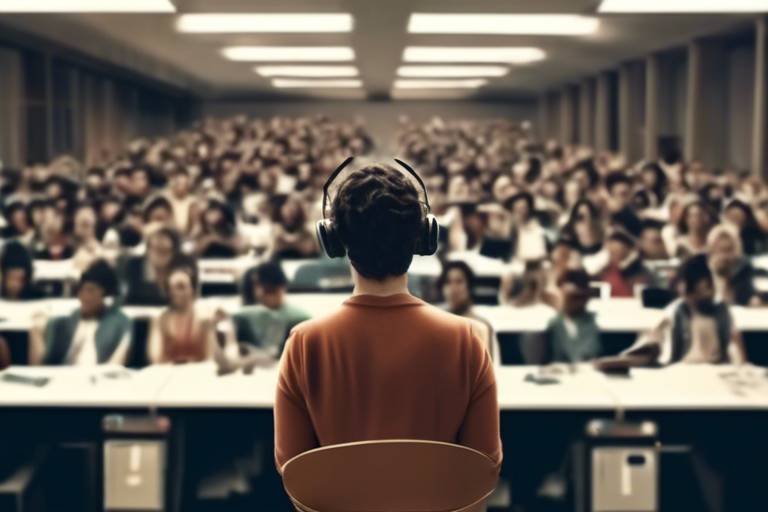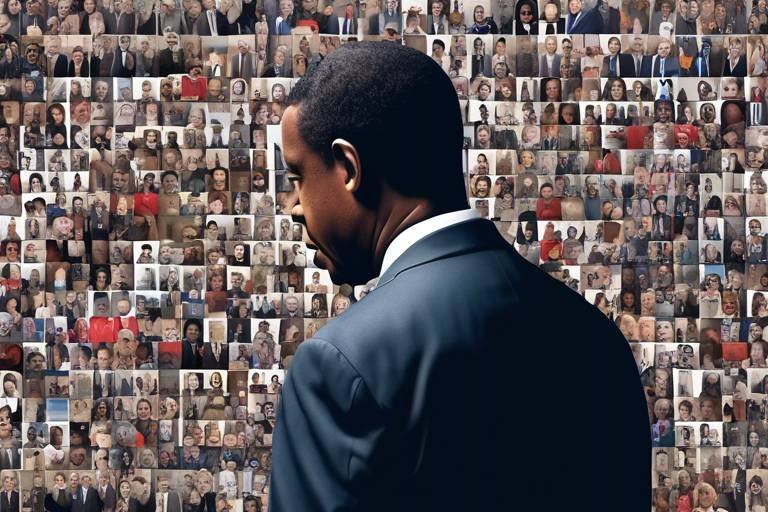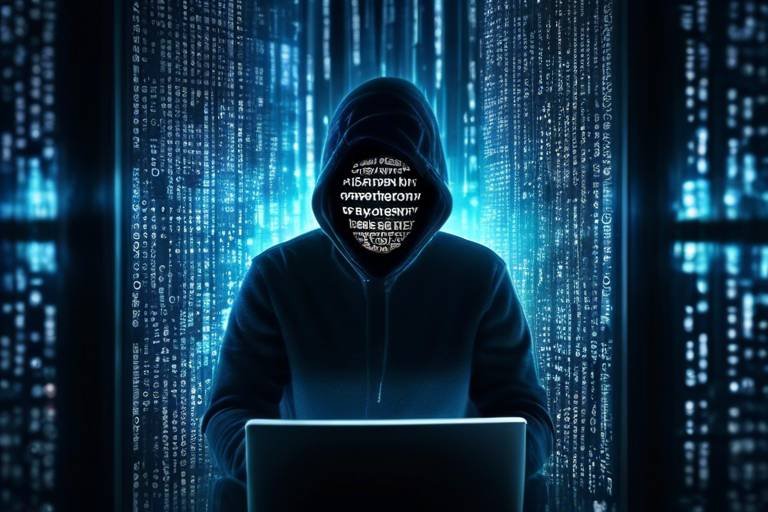The Impact of Digital Communication on Relationships
In today's fast-paced world, digital communication has become the lifeline of our interpersonal relationships. From texting to social media, the way we connect with one another has dramatically transformed. But what does this mean for the quality of our relationships? Are we truly connecting, or are we simply exchanging words through screens? This article dives deep into the multifaceted effects of digital communication, examining both the positive and negative aspects that shape our emotional connections, social skills, and overall communication dynamics.
To appreciate the profound impact of digital communication, we must first understand its historical context. Communication has evolved from the days of smoke signals and handwritten letters to the instantaneous messaging we enjoy today. Imagine a world where sending a message took days or even weeks! With the advent of telephones, emails, and now smartphones, we have witnessed a revolution in how we interact. This journey from traditional methods to modern digital platforms has not only changed the speed of communication but also the way we perceive and maintain our relationships.
Digital communication has opened up a world of possibilities, enabling connections that transcend geographical barriers. One of the most significant benefits is the increased accessibility it provides. Friends and family members who live far apart can maintain their relationships effortlessly through social media, video calls, and instant messaging. It's like having a friend right in your pocket, ready to chat at any moment!
The ease of connecting through various platforms allows us to stay in touch with loved ones, regardless of distance. Social media platforms like Facebook, Instagram, and Twitter enable us to share moments of our lives instantly, fostering a sense of community and belonging. Imagine planning a surprise birthday party for a friend who lives across the country; with digital tools, you can coordinate everything seamlessly. This enhanced connectivity not only strengthens existing relationships but also paves the way for new friendships.
In times of need, digital platforms also create opportunities for support groups and communities. Whether it's a Facebook group for new parents or a forum for mental health support, these virtual networks offer emotional backing and advice. They become safe spaces where individuals can share their experiences without the fear of judgment. This sense of belonging can significantly impact personal relationships, as individuals feel less isolated and more connected to others who understand their struggles.
For couples separated by distance, technology provides invaluable tools to nurture their bond. Video calls can bridge the gap, allowing partners to see each other's faces and share moments in real-time. Text messaging adds an element of spontaneity, enabling sweet surprises and daily check-ins that keep the spark alive. While long-distance relationships can be challenging, digital communication can help sustain them, making the distance feel a little less daunting.
However, digital communication has also altered how we express ourselves. The rise of emojis, GIFs, and memes has created new forms of language that can convey emotions and humor in ways that words alone sometimes cannot. But this evolution comes with its own set of implications. Are we losing the ability to articulate our feelings in a more traditional sense? As we adapt to these new communication styles, it’s essential to remain aware of how they affect our interpersonal connections.
Despite the many advantages, digital communication also presents several challenges. One of the most significant drawbacks is the risk of miscommunication. The absence of non-verbal cues, such as tone and body language, can lead to misunderstandings that strain relationships. How often have you received a text that you interpreted entirely differently than intended? It’s crucial to consider how our messages may be perceived by others.
Miscommunication can create unnecessary tension and conflict. To mitigate these risks, it’s essential to be mindful of how we communicate. Here are a few strategies:
- Use clear language: Avoid jargon or ambiguous terms that could be misinterpreted.
- Ask for clarification: If something seems off, don’t hesitate to ask the sender what they meant.
- Utilize video calls: Whenever possible, opt for video calls to capture non-verbal cues.
As digital communication becomes more prevalent, we may find ourselves engaging in fewer face-to-face interactions. This decline can have significant consequences on the quality of our relationships. In-person conversations allow for deeper emotional connections, as we can read body language and engage in more meaningful exchanges. The warmth of a hug or the comfort of a shared laugh simply cannot be replicated through a screen. It’s vital to carve out time for in-person interactions to ensure our relationships remain strong and vibrant.
Finding a balance between digital communication and personal interactions is crucial for healthy relationships. While technology offers remarkable tools for connection, it should not replace the richness of face-to-face conversations. Here are some tips to maintain this equilibrium:
- Set boundaries: Designate specific times for digital communication and stick to them.
- Prioritize in-person meetings: Make an effort to meet friends and family regularly.
- Be present: When engaging in conversations, whether online or in-person, give your full attention.
Q: How can I improve my digital communication skills?
A: Practice active listening, use clear language, and be mindful of your tone. Don't forget to ask for feedback!
Q: What are some signs that I might be relying too much on digital communication?
A: If you find it challenging to engage in face-to-face conversations or feel disconnected from those around you, it may be time to reassess your communication habits.
Q: Can digital communication enhance my relationships?
A: Absolutely! When used thoughtfully, digital communication can help maintain connections and foster new ones.

The Evolution of Communication
Understanding the historical context of communication helps us appreciate how digital platforms have transformed interactions. Imagine a world where messages took weeks to travel, where letters were the primary means of connecting with loved ones. This was the reality until the late 20th century when a technological revolution began to reshape our interactions. The journey from smoke signals to instant messaging is not just fascinating; it’s a testament to human ingenuity and our innate desire to connect.
Initially, communication was limited to face-to-face interactions or written correspondence, which, while meaningful, often lacked immediacy. The invention of the telephone in the 19th century marked a pivotal moment, allowing people to converse in real-time over long distances. Fast forward to the internet era, and we have a plethora of platforms at our fingertips. Social media, emails, and messaging apps have become the new norm, revolutionizing how we maintain relationships.
Let’s take a moment to reflect on the major milestones in this evolution:
| Year | Communication Method | Impact |
|---|---|---|
| 2000 BC | Written Language | Enabled record-keeping and long-distance communication. |
| 1876 | Telephone | Allowed real-time voice conversations over distances. |
| 1990s | Internet | Opened doors for email and online communication. |
| 2004 | Social Media | Revolutionized how we share our lives and connect with others. |
As we transitioned through these phases, the essence of communication transformed. Where once we relied heavily on physical presence and written words, we now engage through a myriad of digital platforms that allow for instant feedback and interaction. This shift has not only made communication faster but has also introduced new forms of expression, such as emojis and memes, which convey emotions and ideas in ways that words sometimes cannot.
However, this evolution is a double-edged sword. While it has made communication more accessible, it has also raised questions about the depth and authenticity of our interactions. Are we truly connecting, or are we merely exchanging information? This question is crucial as we navigate the complexities of modern relationships, highlighting the need to find a balance between digital communication and personal interactions.
In summary, the evolution of communication from ancient methods to modern digital platforms has profoundly influenced our relationships. As we embrace these changes, it's essential to remember the value of genuine connections, whether they occur through a screen or in person. The journey of communication is ongoing, and how we adapt to these changes will determine the quality of our relationships in the future.

In today's fast-paced world, digital communication has become a lifeline for maintaining relationships. The beauty of this modern era is that it allows us to connect with friends and family across vast distances with just a few taps on our screens. Imagine being able to share a laugh with a friend halfway across the globe or witness a family member's special moments in real-time. This newfound accessibility has transformed how we interact, making it easier than ever to stay in touch. The ability to communicate instantly has not only fostered existing relationships but also paved the way for new ones, creating a rich tapestry of connections that span continents.
One of the most significant advantages of digital communication is the enhanced connectivity it provides. With platforms like social media and messaging apps, individuals can effortlessly maintain relationships that might have otherwise faded. Think about it: how many times have you reconnected with an old friend through Facebook or Instagram? These platforms serve as bridges that keep us linked to our past while allowing us to embrace the present. The ease of connecting means that even the busiest of us can find a moment to reach out, share a thought, or simply say, "I’m thinking of you." This constant connectivity nurtures friendships and keeps relationships vibrant.
Moreover, digital communication has given rise to virtual support networks. These online communities provide a platform for individuals to share experiences, seek advice, and offer emotional support. Whether it’s a Facebook group dedicated to parenting or a forum for mental health support, these networks allow people to connect with others who truly understand their struggles. They create a sense of belonging and reassurance that one is not alone in their journey. The impact of these digital support systems on personal relationships can be profound, as they often lead to deeper connections and shared experiences that strengthen bonds.
Another area where digital communication shines is in the realm of long-distance relationships. For couples separated by miles, technology acts as a lifeline, allowing them to maintain intimacy despite the physical distance. Video calls, instant messaging, and social media enable partners to share their daily lives, celebrate milestones, and support each other through challenges. This digital connection can make the distance feel a little less daunting, transforming what could be a lonely experience into a journey of shared growth and understanding. The tools available today ensure that love can thrive, no matter the miles in between.
However, it’s essential to recognize that while digital communication has its perks, it has also led to shifts in communication styles. Emojis, GIFs, and shorthand texting have become the new language of modern relationships. This evolution can be both exciting and challenging. On one hand, these new forms of expression can make communication more engaging and fun, but on the other hand, they can lead to misunderstandings if not used carefully. The challenge lies in adapting to these changes while ensuring that the essence of our messages is not lost. As we navigate this digital landscape, it’s crucial to remain mindful of how we communicate and to embrace the creativity that comes with it.
In conclusion, the positive effects of digital communication are undeniable. From enhanced connectivity to the formation of virtual support networks, technology has reshaped the way we build and maintain our relationships. As we continue to explore this digital frontier, let’s remember to cherish the connections we make, both online and offline, and to use these tools to foster deeper, more meaningful interactions.

In today's fast-paced world, the way we connect with one another has undergone a remarkable transformation. Digital communication has revolutionized our interpersonal relationships, making it easier than ever to stay in touch with friends, family, and even acquaintances. Imagine being able to share a moment from your day with a friend halfway around the world in just a few clicks—this is the beauty of modern technology. Social media platforms, messaging apps, and video calls have created an environment where distance is no longer a barrier.
Think about it: how many times have you found yourself scrolling through your social media feed, catching up with friends' lives? The ability to share updates, photos, and experiences instantly has fostered a sense of closeness that was previously unimaginable. For instance, platforms like Facebook, Instagram, and WhatsApp allow users to maintain relationships that might have otherwise faded due to geographical separation. This connectivity not only keeps friendships alive but can also enhance them, as individuals can share their daily lives and milestones in real-time.
Moreover, the rise of group chats and online communities has further strengthened bonds among people. Whether it's a family group chat or a community of like-minded individuals, these digital spaces provide a platform for shared experiences and support. Consider the following benefits of enhanced connectivity:
- Instant Communication: The ability to send a quick message or make a video call means that no one has to feel isolated.
- Shared Experiences: Friends can watch movies together or play games online, creating shared memories despite being miles apart.
- Real-Time Updates: Keeping up with life events as they happen fosters a feeling of involvement and connection.
However, while these tools enable us to connect, they also challenge traditional notions of communication. The nuances of face-to-face interactions—like body language and tone—are often lost in text messages or social media posts. This shift has led to the creation of new forms of expression, such as emojis and memes, which help convey feelings that words alone sometimes fail to express. But does this mean that our relationships are less genuine? Not necessarily. Instead, it suggests that we are evolving, finding innovative ways to express ourselves in a digital landscape.
In conclusion, enhanced connectivity through digital communication has opened up a world of possibilities for maintaining and nurturing relationships. While it brings its own set of challenges, the benefits of staying connected far outweigh the drawbacks. As we navigate this digital age, it's essential to embrace these changes while also being mindful of the importance of personal interactions. After all, technology should serve as a bridge, not a barrier, in our relationships.
- How has digital communication changed the way we maintain relationships? Digital communication allows for instant updates, making it easier to stay connected with loved ones regardless of distance.
- Are online friendships as meaningful as in-person ones? While different, online friendships can be equally meaningful, especially when nurtured through regular communication and shared experiences.
- What are some ways to balance digital and personal interactions? Setting aside dedicated time for face-to-face interactions while using digital tools for regular check-ins can help maintain a healthy balance.

In today's fast-paced world, the concept of community has taken on a whole new meaning, thanks to the rise of virtual support networks. These online spaces allow individuals to connect, share, and support one another, transcending geographical barriers that once limited our interactions. Imagine being able to join a group of like-minded individuals from around the globe who share your passions, struggles, or experiences—this is the beauty of digital communication in fostering community.
Virtual support networks are not just about finding people to talk to; they offer a sense of belonging that many may struggle to find in their immediate surroundings. Whether you're dealing with personal challenges, seeking advice, or simply looking for a group that understands your journey, these networks provide a platform where you can express yourself freely. For instance, platforms like Facebook groups, Reddit, and Discord host communities ranging from mental health support to hobbyist clubs, allowing users to engage with others who truly understand their experiences.
Moreover, these networks often provide resources that can be invaluable. Many groups share articles, videos, and expert advice that can help individuals navigate their challenges more effectively. For example, a support group for new parents might share tips on sleep training, while a mental health community might provide links to therapy resources. The sharing of knowledge and experiences creates a ripple effect, empowering individuals to take charge of their situations.
However, it’s essential to approach these virtual communities with a balanced mindset. While they can offer tremendous support, they can also lead to information overload, where one might feel overwhelmed by the sheer amount of advice and opinions available. It's crucial to discern what advice resonates with you and to seek professional help when necessary. In essence, virtual support networks are a double-edged sword; they can be a source of strength, but it's important to navigate them wisely.
In conclusion, virtual support networks have revolutionized the way we connect and support one another. They provide a lifeline for many, fostering emotional connections that might be difficult to cultivate in our daily lives. By engaging with these communities, individuals can find not just support, but also friendship and understanding, proving that even in a digital age, the human need for connection remains as strong as ever.
- What are virtual support networks?
Virtual support networks are online communities where individuals can connect with others facing similar challenges, share experiences, and offer emotional support.
- How can I find a virtual support network?
You can find virtual support networks through social media platforms, forums, and dedicated websites focused on specific topics or issues.
- Are virtual support networks effective?
Yes, many people find virtual support networks to be effective in providing emotional support and valuable resources, although it's essential to approach them thoughtfully.
- Can I rely solely on virtual support networks for help?
While virtual support networks can be helpful, they should complement, not replace, professional help and in-person support when needed.

In today's fast-paced world, long-distance relationships have become more common than ever, thanks to the advancements in digital communication. Couples who find themselves separated by miles no longer have to rely solely on the occasional phone call or handwritten letter. Instead, they can connect through a plethora of digital platforms that allow for real-time interaction. Imagine being able to see your partner's smile or hear their laughter, all from the comfort of your own home! This is the magic of technology.
However, maintaining a long-distance relationship is not just about having the right tools; it’s about how you use them. Regular video calls, instant messaging, and social media interactions play a crucial role in keeping the emotional connection alive. For instance, scheduling weekly video dates can create a sense of routine and anticipation, much like a traditional date night. This not only helps in bridging the physical gap but also strengthens the emotional bond. It’s like having a piece of your partner with you, even if they’re hundreds of miles away.
To navigate the challenges that come with distance, couples often develop unique strategies tailored to their relationship dynamics. Here are some effective ways to nurture long-distance love:
- Creative Communication: Beyond just texting or calling, consider sending voice notes, sharing playlists, or even playing online games together. These activities can add a layer of fun and engagement to your interactions.
- Set Goals: Establishing shared goals, like planning visits or discussing future plans, can provide a sense of direction and purpose in the relationship.
- Surprise Each Other: Sending unexpected gifts or letters can keep the romance alive and make your partner feel cherished, reminding them that they are on your mind.
Moreover, technology has introduced various apps specifically designed for couples in long-distance relationships. These apps can help you share calendars, send virtual hugs, or even play games together, making distance feel a little less daunting. The ability to share moments in real-time, whether it’s a beautiful sunset or a funny meme, allows couples to feel more connected despite the miles that separate them.
However, it’s essential to recognize that digital communication can’t fully replace the intimacy of face-to-face interactions. Physical presence has its own unique charm, and the absence of it can sometimes lead to feelings of loneliness or insecurity. Therefore, it’s crucial to balance digital interactions with occasional visits whenever possible. These visits can serve as a powerful reminder of why you’re committed to making the relationship work.
In conclusion, while long-distance relationships come with their own set of challenges, the tools provided by digital communication can help couples maintain and even strengthen their bonds. By embracing technology and being intentional about your interactions, you can turn distance into an opportunity for growth and deeper connection. Just remember, love knows no bounds, and with a little creativity and effort, distance can become just a number.
- How can we keep the romance alive in a long-distance relationship? Regular communication, surprise gifts, and planning visits can help maintain the romance.
- What are some good apps for long-distance couples? Some popular apps include Couple, Between, and Love Nudge, which offer features tailored for long-distance communication.
- How often should we communicate? It varies by couple, but establishing a routine that works for both partners can help maintain connection without feeling overwhelming.
- What if one partner feels insecure about the distance? Open communication about feelings and reassurance can help alleviate insecurities. It's important to discuss concerns and support each other.

In our fast-paced, technology-driven world, the way we communicate has undergone a significant transformation. Gone are the days when a heartfelt letter or a face-to-face conversation was the norm. Today, digital communication dominates our interactions, leading to a fascinating yet complex evolution in our communication styles. Have you ever noticed how a simple text message can convey a range of emotions, from excitement to sarcasm, all without the benefit of facial expressions or tone? This shift has introduced a new lexicon of communication, where emojis, GIFs, and memes serve as modern-day hieroglyphics, allowing us to express feelings that words alone sometimes fail to capture.
One of the most notable changes is the rise of abbreviated language. Phrases like "LOL," "BRB," and "FYI" have become commonplace, reflecting our need for speed in digital conversations. While this shorthand can make communication more efficient, it also raises questions about clarity and understanding. Are we losing the ability to articulate our thoughts fully? This evolution can be likened to the way languages adapt over time—sometimes for the better, but often at the cost of richness and depth.
Moreover, the prevalence of digital communication has led to a blurring of boundaries between personal and public life. Social media platforms invite us to share our thoughts, experiences, and feelings with a broader audience, creating a sense of community but also exposing us to scrutiny. This phenomenon can lead to a paradoxical situation where individuals feel more connected than ever yet can also experience feelings of isolation or inadequacy when comparing their lives to the curated images of others. It's a digital double-edged sword, where the same tools that foster connection can also breed disconnection.
Interestingly, this shift has also influenced how we handle conflict. In the past, disagreements were often resolved face-to-face, allowing for immediate feedback and emotional cues. However, now many people opt for text-based communication to address conflicts, which can lead to misunderstandings and unresolved tensions. The absence of non-verbal cues—like body language and tone—can make it challenging to gauge the other person's feelings, often resulting in a game of telephone where the original message becomes distorted.
To illustrate this shift, consider the following table that outlines different communication styles before and after the rise of digital communication:
| Aspect | Traditional Communication | Digital Communication |
|---|---|---|
| Medium | Face-to-face, Phone Calls, Letters | Text Messages, Social Media, Emails |
| Expression | Verbal and Non-verbal Cues | Text, Emojis, GIFs |
| Conflict Resolution | In-person Discussions | Text-based Exchanges |
| Accessibility | Limited to Physical Presence | Global Reach Anytime |
As we navigate this new landscape, it’s essential to recognize the implications of these shifts on our relationships. While digital communication offers a convenient way to stay connected, it’s crucial to remember the value of face-to-face interactions. They foster deeper emotional connections and a better understanding of one another. So, how do we strike a balance? By being mindful of when to pick up the phone or meet in person, we can enhance our relationships and ensure that our communication remains meaningful.
- How has digital communication changed the way we express emotions?
Digital platforms allow for quick expression through emojis and GIFs, but they can lack the depth of face-to-face conversations.
- What are the risks of relying too much on digital communication?
Over-reliance can lead to misunderstandings, reduced emotional connections, and a decline in face-to-face interactions.
- How can I improve my digital communication skills?
Practice clarity in your messages, use appropriate emojis to convey tone, and don't hesitate to follow up with a call when necessary.

While digital communication has revolutionized the way we connect, it is essential to recognize that it also brings a host of challenges that can negatively impact our relationships. One of the most significant drawbacks is the risk of miscommunication. Without the benefit of non-verbal cues—like facial expressions, tone of voice, and body language—messages can easily be misinterpreted. For instance, a simple text message meant to convey humor might come off as sarcasm, leading to unnecessary misunderstandings. This lack of clarity can strain relationships, as individuals may feel hurt or confused by what was intended to be a light-hearted comment.
To illustrate this point, consider the following table which outlines common miscommunication scenarios in digital communication:
| Scenario | Possible Misinterpretation | Potential Impact |
|---|---|---|
| Casual Text | Seen as rude or dismissive | Feelings of resentment |
| Short Responses | Perceived as disinterest | Increased anxiety about the relationship |
| Use of Emojis | Misunderstood emotional tone | Confusion in communication |
Moreover, the decline in face-to-face interactions is another concerning effect of our reliance on digital communication. As we become more accustomed to chatting through screens, the richness of in-person conversations—filled with laughter, gestures, and emotional exchange—can diminish. This shift can lead to a sense of isolation, even when we are surrounded by friends online. Think about it: have you ever felt lonely in a crowded room? That’s the paradox of digital communication; it can make us feel connected while simultaneously distancing us from genuine, human experiences.
Furthermore, excessive digital communication can contribute to a phenomenon known as social fatigue. With the constant barrage of notifications, messages, and updates, it’s easy to feel overwhelmed. This can lead to burnout, where individuals might withdraw from both online and offline social interactions. The irony here is that while we have more ways to connect than ever before, the quality of those connections may suffer. As relationships become more superficial—often characterized by likes and shares rather than deep conversations—the emotional bonds that hold us together may weaken.
In addition to these challenges, we must also consider the impact of digital communication on mental health. Studies have shown that excessive use of social media can lead to feelings of inadequacy, anxiety, and depression. The curated nature of online personas often creates unrealistic expectations, making individuals feel as though they are not measuring up. This can particularly affect younger generations who are still learning how to navigate social dynamics. The pressure to maintain a perfect online image can overshadow the importance of authentic relationships, which are built on trust, vulnerability, and mutual support.
In conclusion, while digital communication offers incredible advantages, it is vital to remain aware of its potential downsides. Miscommunication, reduced face-to-face interactions, social fatigue, and mental health challenges are all factors that can hinder the quality of our relationships. By acknowledging these issues, we can strive to create a more balanced approach to communication that honors both the benefits of technology and the irreplaceable value of personal connections.
- What are some common miscommunication scenarios in digital communication?
Common scenarios include casual texts being perceived as rude, short responses being seen as disinterest, and the misinterpretation of emotional tone through emojis. - How can I improve my face-to-face interactions?
To enhance face-to-face interactions, make a conscious effort to schedule in-person meetings, practice active listening, and engage in meaningful conversations without distractions. - What are the signs of social fatigue?
Signs of social fatigue include feeling overwhelmed by notifications, withdrawing from social interactions, and experiencing burnout from constant online engagement.

In the fast-paced world of digital communication, we often find ourselves relying heavily on texts, emails, and social media messages to convey our thoughts and feelings. While this mode of communication offers convenience, it also comes with significant miscommunication risks that can strain relationships. One of the primary issues is the absence of non-verbal cues, which play a crucial role in how we interpret messages. Think about it: when you’re chatting with a friend in person, their facial expressions, tone of voice, and body language provide context that helps you understand their emotions. In contrast, a simple text message can easily be misinterpreted. A phrase like “I’m fine” could be read as genuine or sarcastic, depending on the context that’s missing.
Moreover, the lack of immediate feedback in digital communication can lead to misunderstandings. When we communicate face-to-face, we can gauge reactions in real time, allowing us to clarify our intentions on the spot. However, in a digital setting, a delayed response can create anxiety and uncertainty. You might find yourself wondering if your friend is upset or if they simply haven’t had the chance to reply. This gap can lead to overthinking and unnecessary conflict, which can be detrimental to any relationship.
To illustrate the prevalence of miscommunication in digital interactions, consider the following table that highlights common scenarios and their potential pitfalls:
| Scenario | Potential Miscommunication | Impact on Relationships |
|---|---|---|
| Texting a friend | Ambiguous tone | Feelings of confusion or hurt |
| Emailing a colleague | Lack of emotional context | Increased tension or misunderstandings |
| Social media comments | Misinterpretation of humor | Public embarrassment or conflict |
In light of these risks, it’s essential to take proactive steps to minimize miscommunication. Here are some strategies to consider:
- Be clear and concise: Avoid vague language that could lead to misunderstandings.
- Use emojis wisely: They can help convey tone but should be used appropriately.
- Follow up: If a conversation feels off, don’t hesitate to check in with the other person to clarify.
Ultimately, while digital communication has revolutionized how we connect with one another, it’s crucial to remain aware of its limitations. By recognizing the risks of miscommunication and actively working to address them, we can foster healthier and more fulfilling relationships in our digital age.

The rise of digital communication has undeniably transformed the way we interact with one another, but it has also led to a significant decline in face-to-face interactions. Imagine a world where conversations are replaced by emojis and texts, where the warmth of a smile is substituted for a screen glow. While technology has made it easier to connect from a distance, it has, ironically, created barriers that can hinder our ability to engage meaningfully in person. The convenience of sending a quick message or posting a status update often overshadows the richness of direct human interaction.
Think about it: when was the last time you had a heart-to-heart conversation with a friend without the distraction of phones or laptops? Many of us now find ourselves in social situations where everyone is glued to their devices, leading to a phenomenon often referred to as "phubbing," or phone snubbing. This behavior not only diminishes the quality of our interactions but can also leave individuals feeling isolated even when surrounded by others. The emotional depth that comes from face-to-face communication—like reading body language or sharing a laugh—is often lost in translation through a screen.
Moreover, the decline in in-person interactions can have broader implications for our social skills. Research indicates that frequent digital communication may lead to a decrease in empathy and the ability to read social cues. When we rely on texts and social media for connection, we miss out on the subtleties of conversation that can only be experienced in person. This can create a cycle where the lack of face-to-face engagement further reduces our comfort and ability to communicate effectively, leading to even fewer in-person interactions.
To illustrate the impact of decreased face-to-face interaction, consider this table that highlights some of the key differences between digital and personal communication:
| Aspect | Digital Communication | Face-to-Face Communication |
|---|---|---|
| Non-Verbal Cues | Limited; relies on emojis and text | Rich; includes body language and facial expressions |
| Emotional Connection | Can be shallow; lacks depth | Deep; fosters genuine connections |
| Response Time | Instant; can lead to impulsive replies | Thoughtful; allows for reflection |
| Engagement Level | Often distracted; multitasking common | Fully engaged; attention focused on the interaction |
In conclusion, while digital communication is an invaluable tool that has reshaped our lives, it is crucial to recognize the importance of maintaining face-to-face interactions. Striking a balance between the two can help us nurture our relationships and enhance our social skills. After all, the essence of human connection lies not just in the words we say, but in the presence we share.
- Why is face-to-face communication important? It fosters deeper emotional connections and allows for the interpretation of non-verbal cues.
- How can I encourage more in-person interactions? Set aside dedicated time for face-to-face meetings, and limit screen time during social gatherings.
- What are the risks of relying solely on digital communication? It can lead to misunderstandings, decreased empathy, and a reduced ability to engage in meaningful conversations.

In today's fast-paced world, where digital communication has become a staple of our daily interactions, finding a balance between online and personal connections is more crucial than ever. Imagine your relationships as a delicate scale, where one side is weighed down by endless notifications and the other by meaningful face-to-face conversations. If you let the digital side tip the scale too far, you might find yourself feeling disconnected, even in a room full of people. So, how can we achieve that harmony?
First and foremost, it’s essential to set boundaries around your digital interactions. For instance, consider designating specific times for checking social media or responding to messages. This can help prevent the overwhelming sensation of being constantly "on call." You might even want to implement a digital detox day, where you unplug entirely and focus on in-person interactions. Think of it as a mini-vacation for your mind—a chance to recharge and reconnect with those around you.
Another effective strategy is to prioritize quality over quantity in your interactions. Instead of scrolling through endless feeds of superficial updates, try to engage in deeper conversations with your loved ones. This could mean scheduling regular coffee dates or game nights where the focus is solely on each other, free from the distractions of screens. In essence, you’re trading the fleeting satisfaction of digital likes for the lasting joy of shared experiences.
Moreover, blending the two forms of communication can also be beneficial. For example, you can use digital platforms to arrange meet-ups or share moments from your day that you’d like to discuss in person. This way, technology becomes a tool to enhance your personal connections rather than a barrier. You could even set up a group chat with friends to plan outings, ensuring that digital communication serves as a bridge to deeper relationships rather than a substitute.
Finally, remember to practice active listening when engaging with others, whether online or in person. This means being fully present, asking open-ended questions, and showing genuine interest in what the other person is saying. By doing so, you’ll foster a sense of connection that transcends the medium of communication. After all, it’s not just about the words exchanged; it’s about the feelings and understanding that come along with them.
In summary, balancing digital and personal interactions requires intentionality and effort. By setting boundaries, prioritizing quality, blending communication methods, and practicing active listening, you can cultivate relationships that are both meaningful and fulfilling. So, the next time you find yourself reaching for your phone, pause for a moment. Ask yourself: is this connection enriching my life or merely filling time? Your relationships deserve the best of both worlds.
- How can I set boundaries for digital communication?
Start by designating specific times for checking your devices and consider implementing a "no phone" rule during meals or conversations to encourage more personal interactions.
- What are some activities to enhance face-to-face interactions?
Consider organizing regular game nights, coffee dates, or outdoor activities that encourage quality time without the distraction of screens.
- Can digital communication be beneficial for relationships?
Absolutely! When used mindfully, digital platforms can enhance communication, help maintain long-distance relationships, and facilitate planning for in-person meet-ups.
Frequently Asked Questions
- How has digital communication changed the way we build relationships?
Digital communication has revolutionized relationship building by making it easier to connect with others, regardless of distance. With social media platforms and messaging apps, individuals can maintain friendships and family ties without the constraints of geography. This accessibility allows for more frequent interactions, which can strengthen emotional bonds.
- What are the positive effects of digital communication on relationships?
One of the most significant positive effects is enhanced connectivity. People can easily stay in touch and share life updates in real-time. Additionally, digital platforms create virtual support networks where individuals can find encouragement and advice, fostering a sense of community that can be incredibly beneficial for personal relationships.
- Are there any negative impacts of digital communication?
Absolutely. While digital communication has its perks, it can also lead to miscommunication due to the lack of non-verbal cues. This can result in misunderstandings that might strain relationships. Moreover, an over-reliance on digital interactions can decrease face-to-face communication, which is crucial for building deeper emotional connections.
- How can we balance digital communication and personal interactions?
Finding the right balance involves being mindful of how much time we spend communicating digitally versus in person. Setting specific times for face-to-face interactions, like weekly meet-ups or phone calls, can help maintain that connection. Additionally, being present during these interactions—putting away devices—can enhance the quality of personal communication.
- What strategies can help reduce miscommunication in digital interactions?
To minimize miscommunication, it’s essential to be clear and concise in your messages. Using emojis or gifs can help convey tone, but it’s also wise to follow up with a call or video chat if a discussion feels particularly sensitive. Always take a moment to consider how your message might be interpreted before hitting send.



















